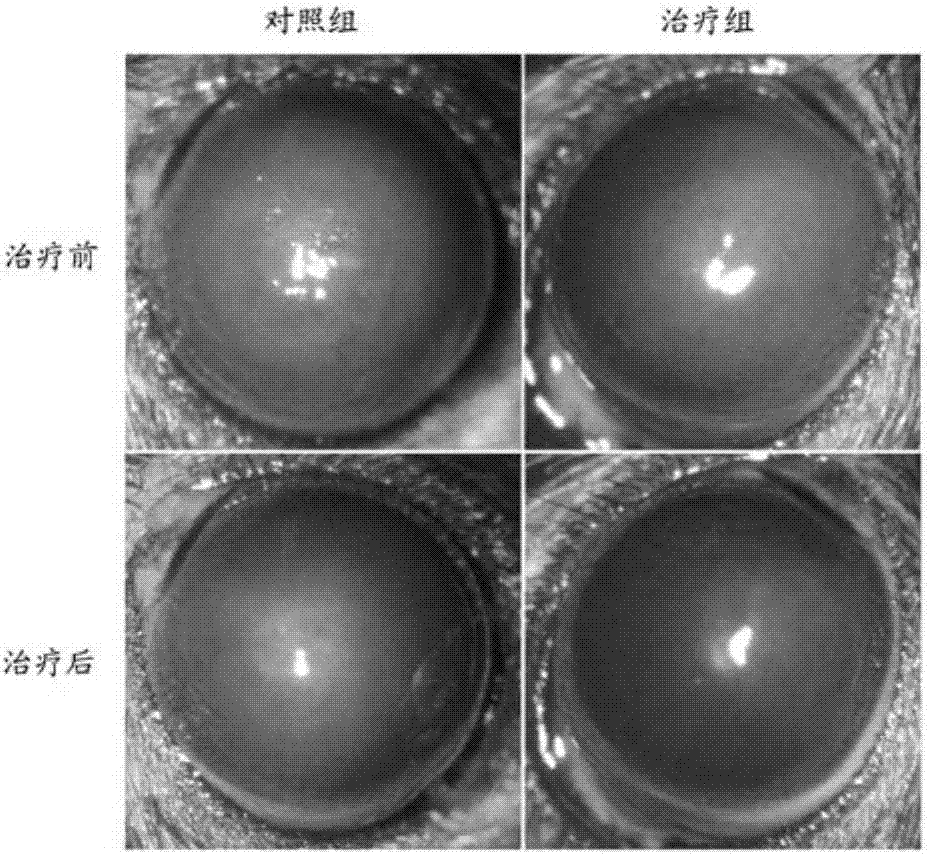Application of BRD4 inhibitor JQ1 in corneal scar inhibition
A corneal scar and corneal stroma technology, applied in the field of biomedicine, can solve the problems of corneal scar that is difficult to heal, curative effect and prognosis are not ideal
- Summary
- Abstract
- Description
- Claims
- Application Information
AI Technical Summary
Problems solved by technology
Method used
Image
Examples
Embodiment 1
[0040] Example 1: To study the effect of adding JQ1 (Abcam, USA) on TGFβ-induced differentiation of human corneal stromal cells into HCF.
[0041] Use 2.4U / ml Dispase II (Roche, USA) to digest normal human corneal rings at 4°C (provided by the Eye Bank of Shandong Provincial Eye Institute, and the central cornea of human cornea slices was used in this study after the clinical operation). Tear off the epithelial layer and endothelium under the microscope, remove the excess scleral tissue, cut the corneal tissue into 6-8 small pieces, digest in 1.25mg / ml collagenase at 37°C for 1 hour, collect the digested tissue pieces, and use D / F12+10% FBS (Gibco, USA) culture medium was resuspended and centrifuged, and inoculated into a culture dish, which was human keratocyte stromal cell (HCF) P0 generation cells, and 2000 P2-P4 generation HCF cells were inoculated in a 96-well plate, and one of them was selected. 1 well was used as a control, and 2ng / ml TGFβ was added to the remaining ...
Embodiment 2
[0045] Example 2: To study the effect of exogenously added JQ1 on corneal scarring.
[0046] 1. Establishment of mouse corneal scar model and the effect of JQ1 on corneal scar.
[0047] Twelve adult C57BL / 6 mice were used to scrape the epithelium in the central 3mm area of the mouse right cornea with a 3mm trephine and an epithelial spatula, and the superficial stroma layer was scraped off with a razor blade to establish a corneal scar model. After 7 days, the mouse cornea Significant scars appeared, and the modeling mice were randomly divided into control group and experimental group, subconjunctival injection of 7μl JQ1 (concentration 500nM, mouse weight 25g / mouse) was used as the treatment group (PBS was the control group), and the scar treatment was observed by taking pictures after treatment situation results see image 3 ,like image 3 Significant scars appeared in the mouse cornea 7 days after modeling (upper left and upper right), and the scars in the treatment gro...
PUM
 Login to View More
Login to View More Abstract
Description
Claims
Application Information
 Login to View More
Login to View More - R&D
- Intellectual Property
- Life Sciences
- Materials
- Tech Scout
- Unparalleled Data Quality
- Higher Quality Content
- 60% Fewer Hallucinations
Browse by: Latest US Patents, China's latest patents, Technical Efficacy Thesaurus, Application Domain, Technology Topic, Popular Technical Reports.
© 2025 PatSnap. All rights reserved.Legal|Privacy policy|Modern Slavery Act Transparency Statement|Sitemap|About US| Contact US: help@patsnap.com



